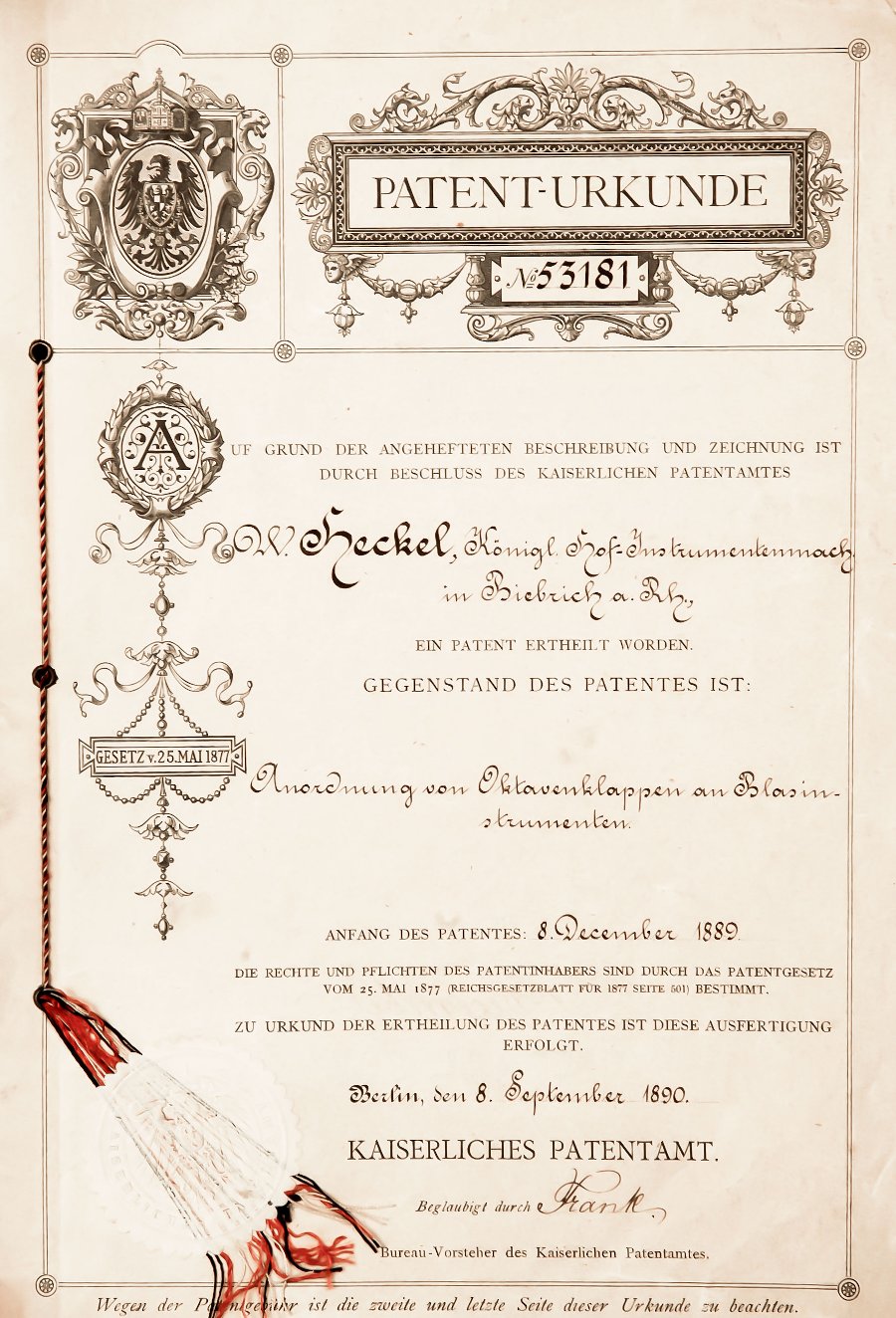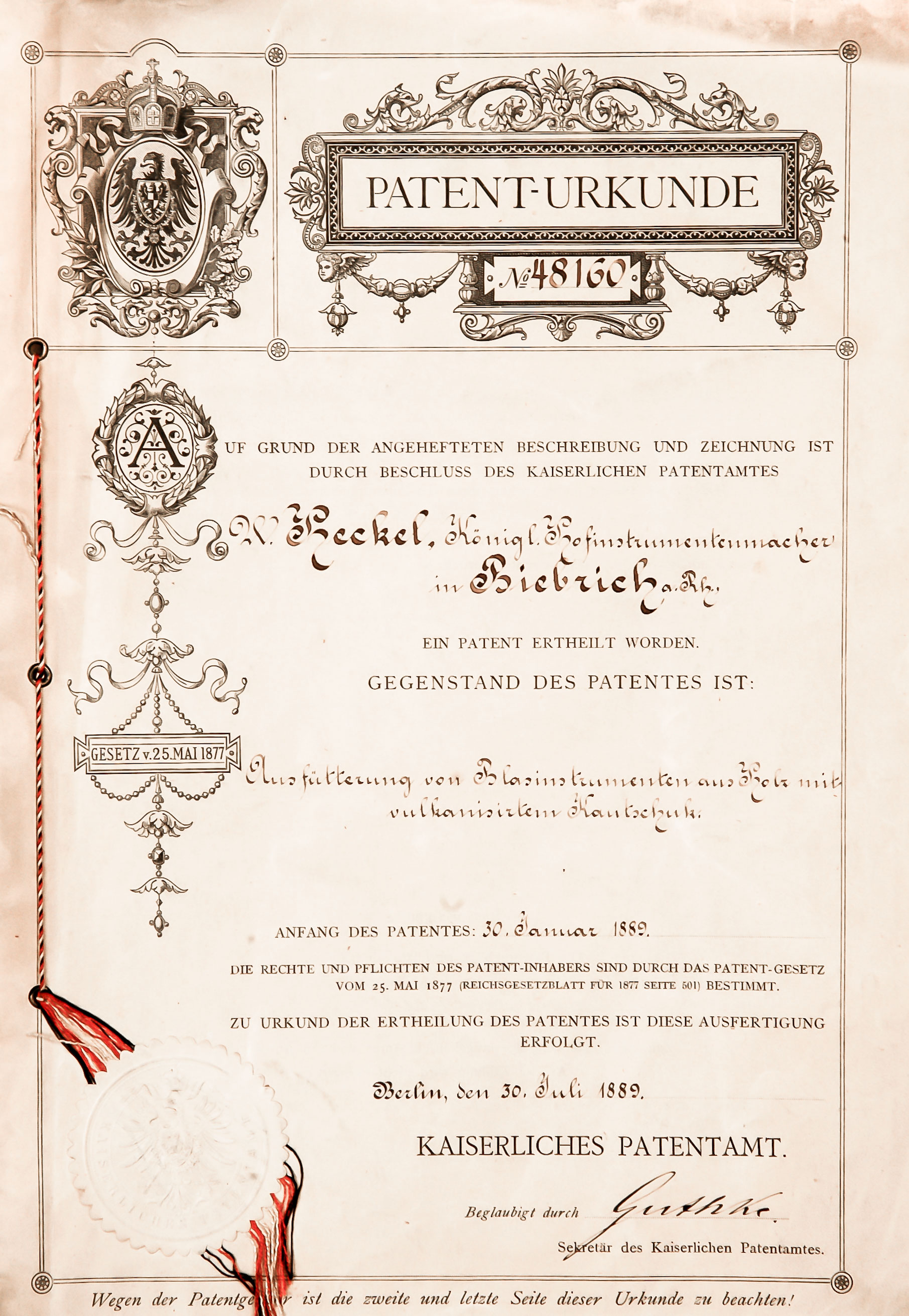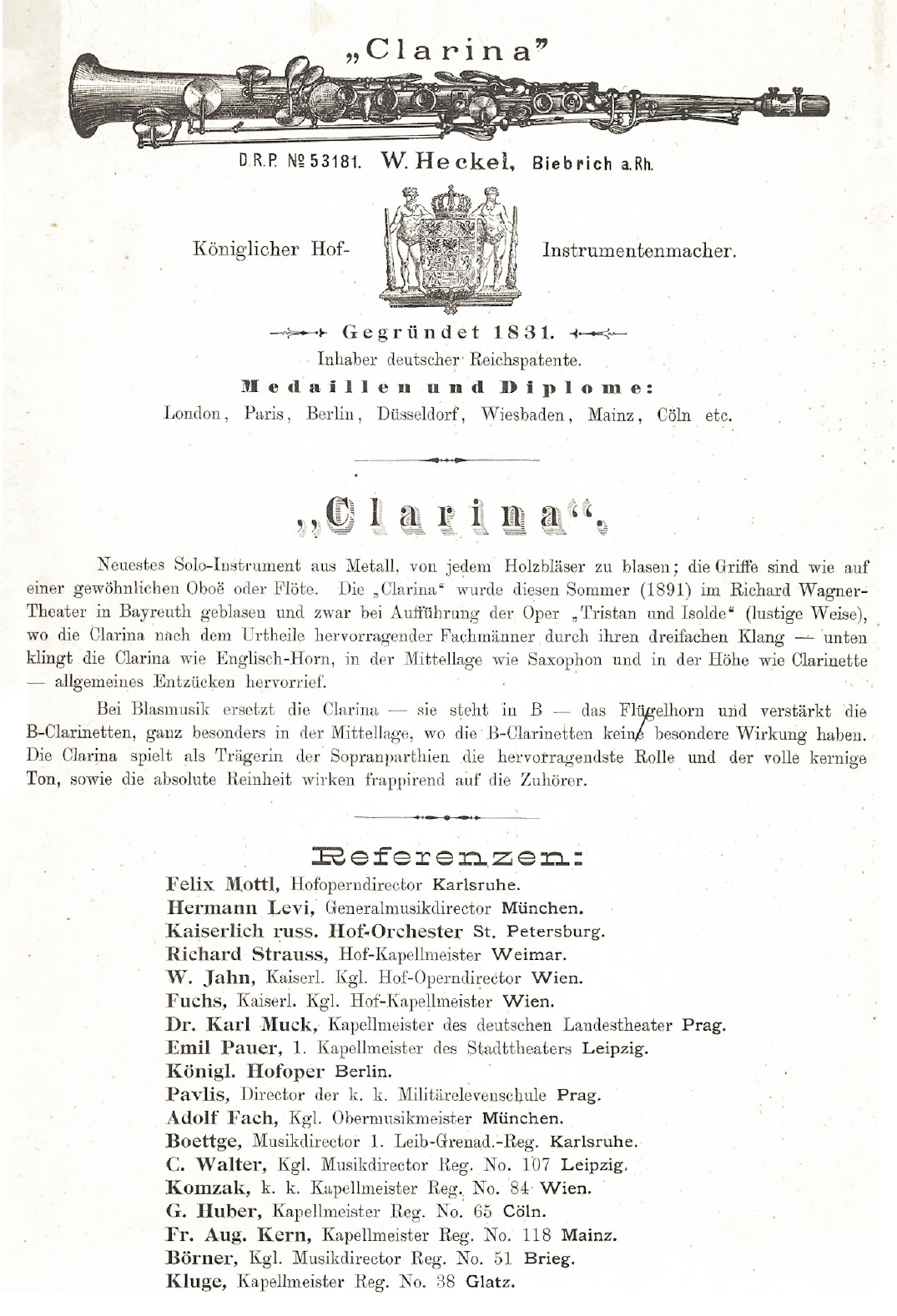In 1889, Wilhelm Heckel filed for another patent, which was for one of the most important inventions in the field of bassoons. At that time, a common problem with woodwind instruments was that the moisture generated during play penetrated the pores of the wood and gradually destroyed the bore of an instrument. Wilhelm Heckel counteracted this by lining those parts that were most affected by moisture. For the first time he began lining the wing joint and narrow bore of the boot joint with a rot-resistant material, natural rubber. Natural rubber was ideally suited to this purpose, because it created a mirror-smooth and pore-proof inner wall, which in turn meant a simple response and a brilliant tone could be generated.
Patent application
In the same year, Wilhelm Heckel also patented the arrangement of octave keys on the contrabassoon. Thus, the sounds from the upper D upwards could also be reached, which made it easier for the musician to play faster passages.

Patent deed: Arrangement of octave keys

Patent deed: lining with natural rubber
On 18 December 1889, the patent application of the Heckel clarina was made. The instrument, which was developed by Wilhelm Heckel and his son Wilhelm Hermann, unfortunately did not prevail. There- fore, only a small number of about 130-150 were sold.

Advertisement for the Heckel clarina from 1891